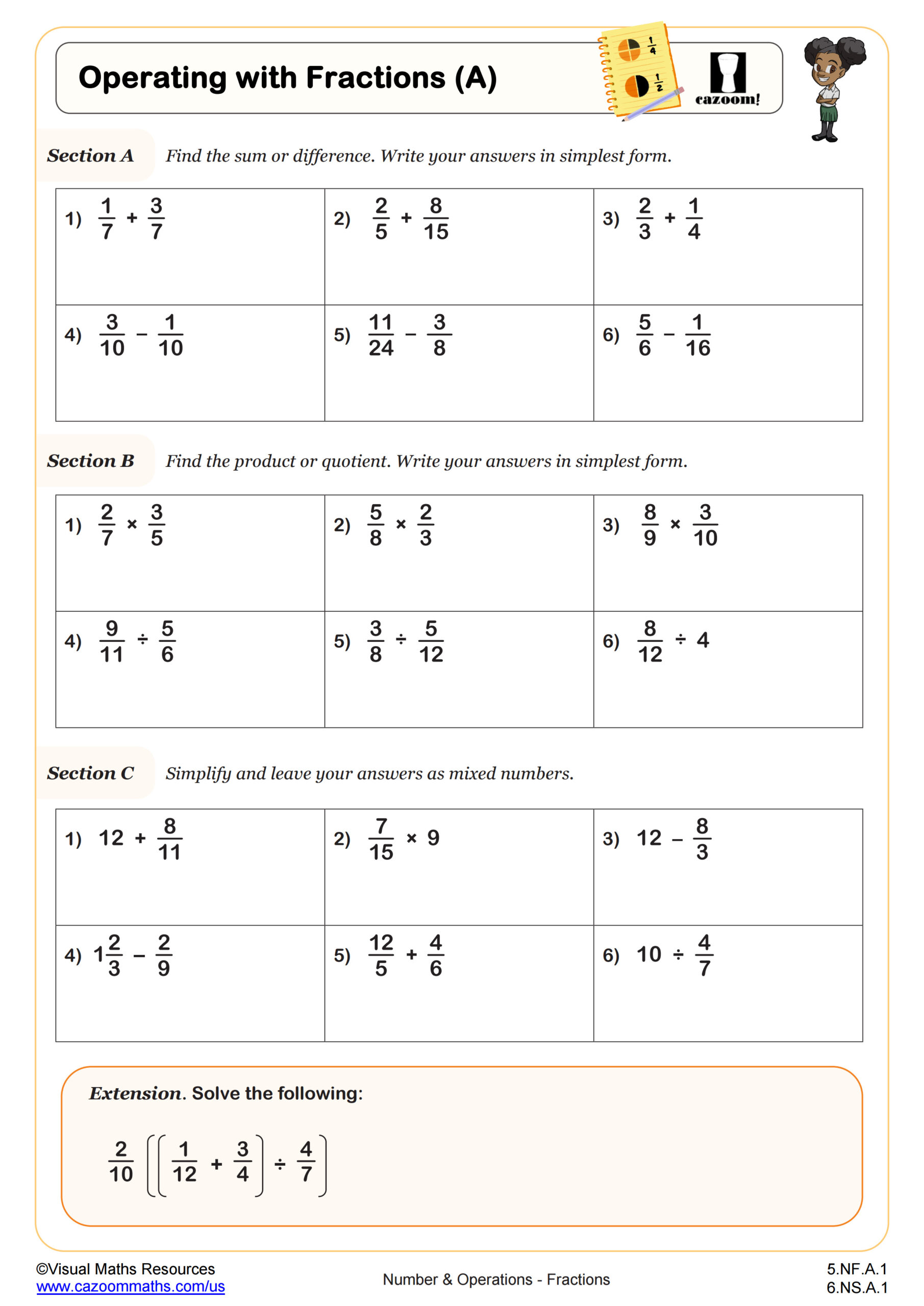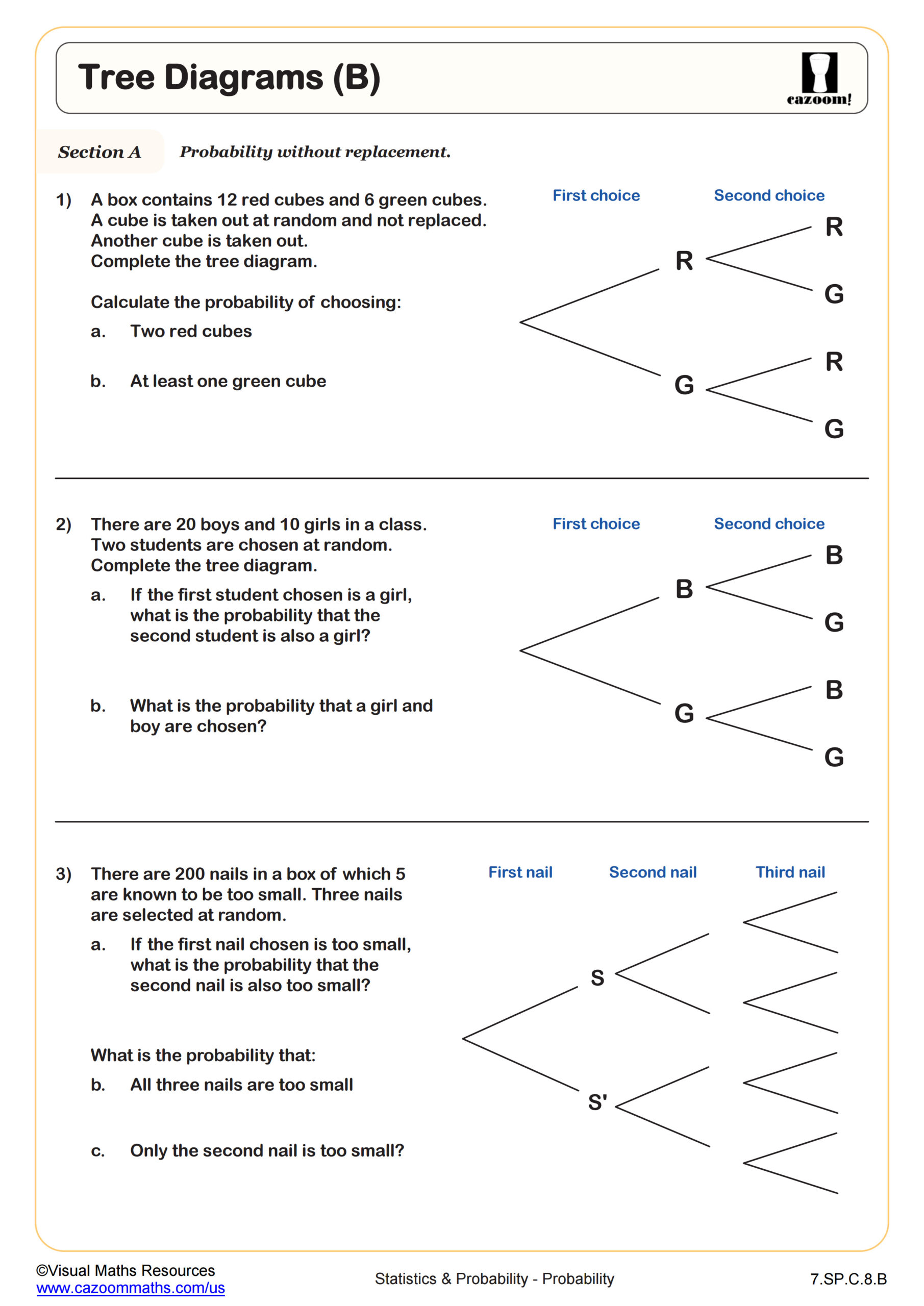Loading...
Tree Diagrams (A) WORKSHEET
Tree Diagrams (A) WORKSHEET DESCRIPTION
This assignment will enable students to use tree diagrams to systematically list possible outcomes and calculate probabilities of multiple independent events. There are seven questions in total for students to answer and the scaffolding we have provided gets lighter with each question. This will build students' confidence when working with tree diagrams, and by the end of the worksheet, they will be able to set up their own tree diagrams.
After drawing each tree diagram, students will use them to calculate either two or three probabilities. Learners will be required to operate with fractions and decimals. Calculators can be used at teacher/parent discretion; however, students are required to calculate these probabilities without the use of a calculator.




